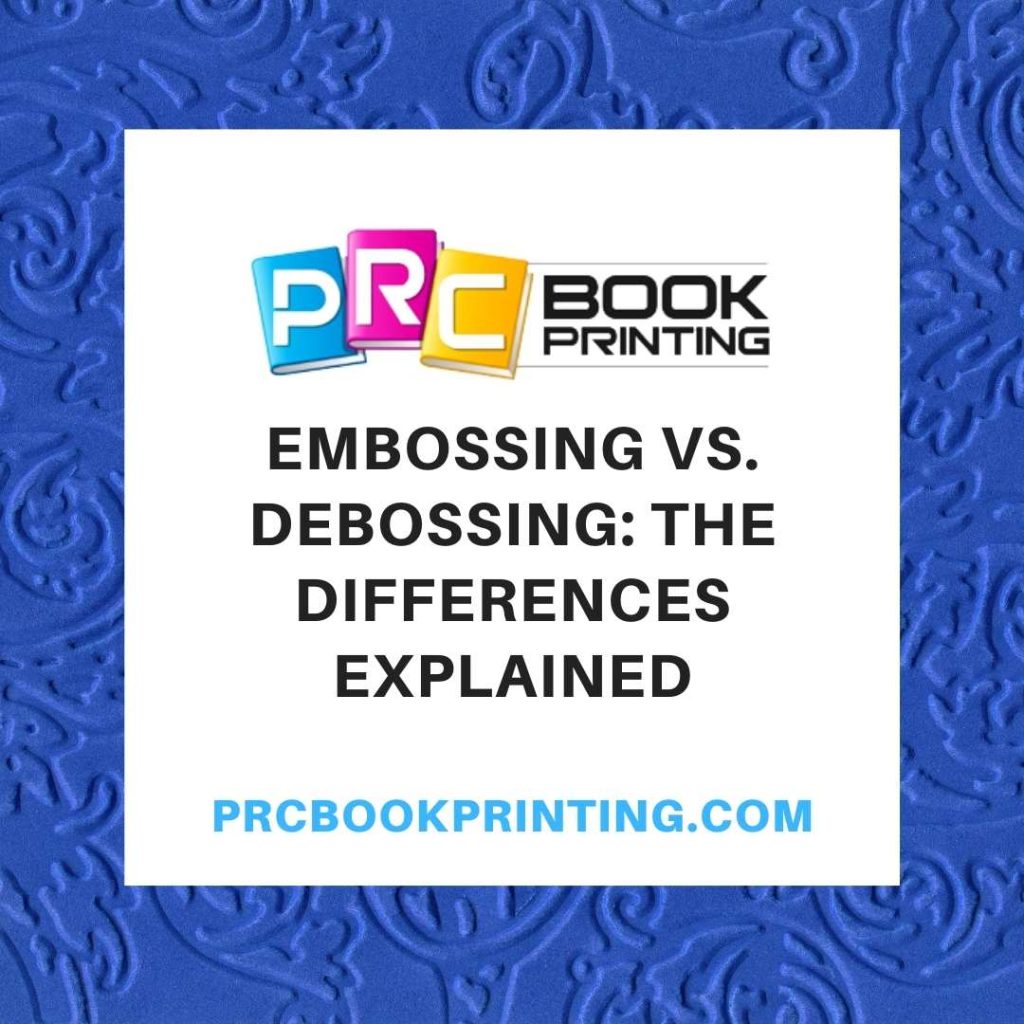Have you ever run your hands over the top of your credit card and felt those ridges of numbers? Those ridged numbers were created with a technique called embossing. Or perhaps you’ve picked up a paperback book and felt imprinted lettering on the front cover. Those lettered indents were most likely created with a debossing technique.
Of the nearly 826 million units of books sold last year, many of the physical copies sold likely included an embossed or debossed title or design.
What is the technical difference between the two? In this article, we’ll explore the difference between the two popular printing techniques of embossing vs. debossing to help you decide which choice is best for your product.
What Is Embossing?
Embossing is a technique completed on a number of different materials to create a raised logo or 3-dimensional graphic. Embossing is a popular method used when printing on materials such as glass, paper, or cloth.
The technique creates a sort of tactile surface to add a creative element to a product, giving it a distinctive look and feel. Embossing a product results in a raised image helping bring focus to the design in question.
Raising the Design
Embossing raises specific designs, making it an excellent technique for the cover of a book. During the process, a metal die gets used to create an imprint. That imprint can then become covered with ink or foil to add to the effect of a book design.
When ink or foil gets left off from the embossing process, this is known as a blind emboss. Blind embossing is used for more of a subtle outcome and is not generally used for finer details like small print.
What Is Debossing?
While embossing is good for paper materials, debossing works best on thick materials like leather, vinyl, or rubber. Due to the thicker materials used when debossing, additional pressure gets used to create custom designs.
Debossing indents a design into the material in question, allowing room for the design to be filled with ink. Debossing tends to be less expensive than embossing as this technique only uses one metal die or metal plate to create the imprinted design.
Embossing vs. Debossing
Debossing can be good for more of a subtle look on paper, whereas embossing tends to stand out more in terms of design. Both techniques use heat and pressure to create 3D images with a metal plate. Be it a paperback book or a simple business card, either technique provides an accessible avenue for enhancing the item.
While it’s important to take into account the material you’ll be using, when it comes to choosing between the two, it simply comes down to which print design you prefer to accomplish. Both provide a way to bring a fresh, visual aesthetic to your product.
Raise the Value of Your Product
Whether you’re looking to add more height or more depth to a design, both techniques bring specific elements of design to help your product shine.
When it comes to choosing between embossing vs. debossing, each carries its own design value. Why not create your next memorable product today with PRC Book Printing? Contact us today to get started!

